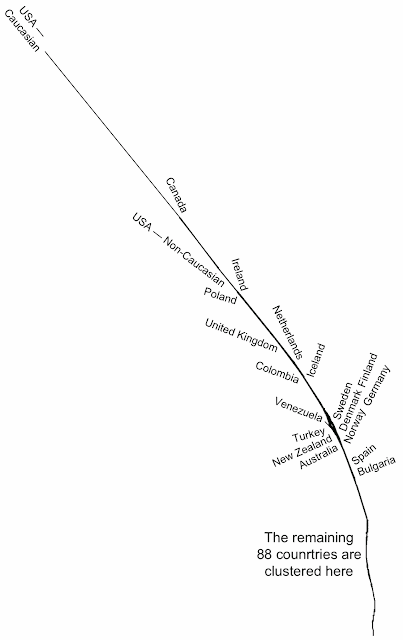The role of the social media in spreading fake news has recently been in the headlines; and it is becoming recognized as a major global risk, unique to the 21st century (the first known examples apparently date from 2010). For example, Chengcheng Shao et al. (The spread of fake news by social bots) note:
If you get your news from social media, you are exposed to a daily dose of false or misleading content - hoaxes, rumors, conspiracy theories, fabricated reports, click-bait headlines, and even satire. We refer to this misinformation collectively as false or fake news ... Even in an ideal world where individuals tend to recognize and avoid sharing low-quality information, information overload and finite attention limit the capacity of social media to discriminate information on the basis of quality. As a result, online misinformation is just as likely to go viral as reliable information.However, an equally problematic issue occurs when the professional media indulge in the same practice — disseminating fake news online. A good example of this appeared during June-July 2016. It involved the presence online of this so-called research paper:
Scientific analysis reveals major differences in the breast size of women in different countries. The Journal of Female Health Sciences.
On the face of it, the paper seems very doubtful:
- The concept itself is preposterous — although different genetic groups might have differences in breast size, on average, many countries have a mix of difference genetic groups, and thus should have a mix of breast sizes. There isn't an Olympics of breast dimensions!
- The paper first appeared online in mid 2015, at a location not directly associated with any known journal.
- The alleged journal's home page contains no references to any other published papers, nor to any mechanism for accessing or subscribing to it.
- The alleged society publishing the journal has no internet presence, other than the journal homepage.
- The alleged institutions from which the authors hail have no internet presence, other than the paper.
- The alleged authors also have no internet presence, other than the paper.
A Google search results in 755 hits to the paper's title, many of them internet commentaries. However, consider the following list of professional publications that took the paper seriously in mid 2016:
- The Sun — The breast in the world: the countries where women have the biggest natural boobs in the world … and the smallest
- The Telegraph — US women have the biggest breasts in the world — study reveals
- The Mirror — The countries boasting the women with the biggest natural boobs revealed - where does Britain rank?
- Daily Mail — Land of the free and home of the busty! American women revealed as having the biggest natural breasts in the world, while Brits come in fifth and Filipinos are last
- The Irish Sun — Women in Ireland have the third biggest natural boobs in the world
- New York Daily News — Red, white and boobs: American women boast the biggest breasts in the world
- Seventeen — American women apparently have the biggest boobs in the world
- Teen Vogue — U.S. women have the biggest boobs in the world, says science
- FHM — Pinays have the smallest breasts in the world, study finds
- Philippine Star — Study: Filipino women have the smallest breast size in the world
- ABS-CBN — Study: PH women have smallest breasts in the world
- South Africa Times — Where boobs grow biggest
- Media Equalizer — Fake breast size study fools publications around the world
- Manila Times — Fake research on women’s breast sizes is trite and boring
- Daily Caller — Study showing America has world’s biggest boobs is a hoax but let’s rejoice anyway
- Jose Carillo — Open letter on news stories that Filipinas have the world’s smallest breasts
- Radiation Oncology Journal 35: 121-128 (2017 ) In vivo dosimetry and acute toxicity in breast cancer patients undergoing intraoperative radiotherapy as boost.
- Answers.com — Which country's women have biggest breasts in the world?
It is instructive to look at whether the perpetrators went to any trouble to produce their data. We can do this with a phylogenetic network, as usual on this blog. The network above is a NeighborNet based on the Euclidean distance — countries near each other in the network have similar breast sizes, and the further apart they they are then the less similarity they have. Only the 20 largest breast sizes are labeled.
You can see that the biggest breast sizes come preferentially from women with European backgrounds. You can also see just how extreme the breast sizes are claimed to be in North America. Both claims are actually doubtful.
Obviously, I do not know the origin of the paper and its data, but there is a somewhat similar presentation dating from March 2011, this time with a world map of bra sizes:
- Target Map — Average breast cup size in the world
Finally, if you really do feel the need to read a scientific report about female breast morphology, then try this real one, which at least makes sense:
Evolution and Human Behavior 38: 217-226 (2017) Men's preferences for women's breast size and shape in four cultures.



Interesting!
ReplyDelete